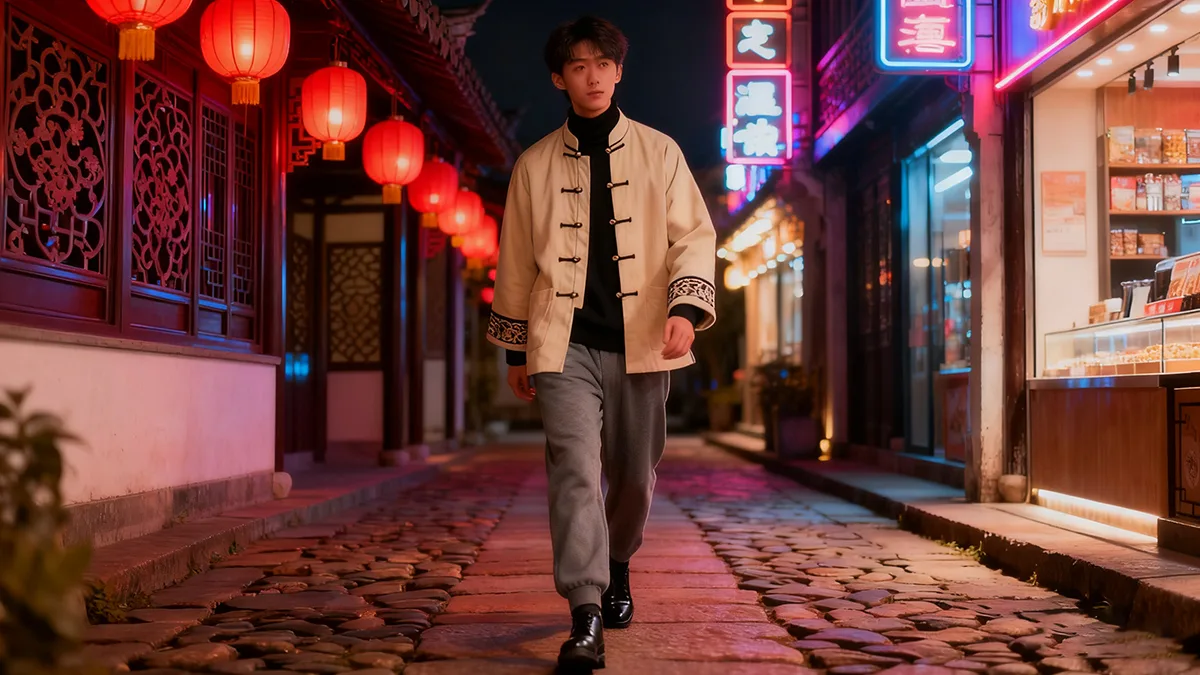What Is A Tang Suit
When people hear the term “Tang suit,” many immediately think of “clothing from the Tang Dynasty.” But is the Tang suit really the same as Tang Dynasty attire? In fact, this is a common misunderstanding.
According to Yu Ying, the chief designer of the Tang suits worn by world leaders at the APEC summit, the “Tang suit” should actually be regarded as a general term for Chinese-style clothing. After the design was completed, the team discussed what to name it, and after several rounds of research and deliberation, they finally decided to call this style of clothing the “Tang suit.”
However, there has always been some debate over the term. Some believe that “Tang suit” refers not only to the Western-tailored Magua-style Tang suit, but also to Tang-style Hanfu, Tang-inspired Han clothing, or even Tang Dynasty garments such as Hu-style attire.
Here, we will set aside these broader interpretations and focus specifically on the Magua-style Tang suit — a unique blend of traditional Chinese aesthetics and modern tailoring.
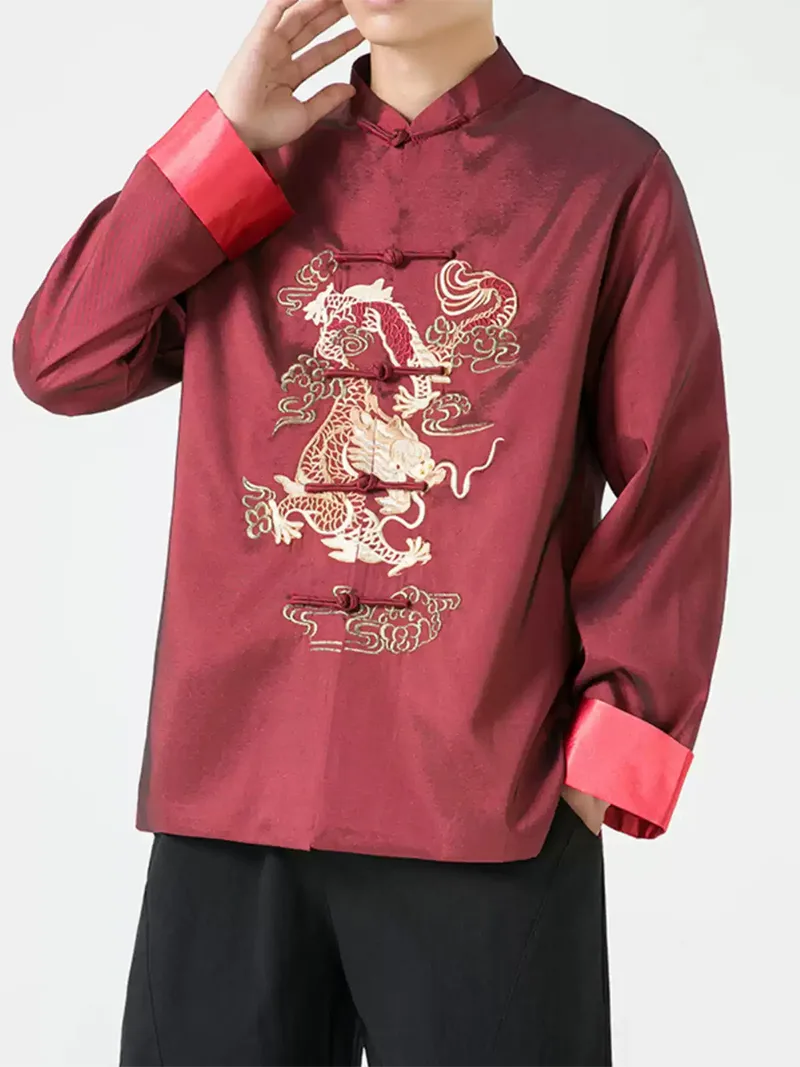
In Western countries, “Chinatown” is called “China town”, which sounds similar to “Tang” in English. Therefore, it was translated as “Tangren Street”. As a result, the Chinese-style clothing worn by the “Tang people” in these streets was called “Tang suit”.
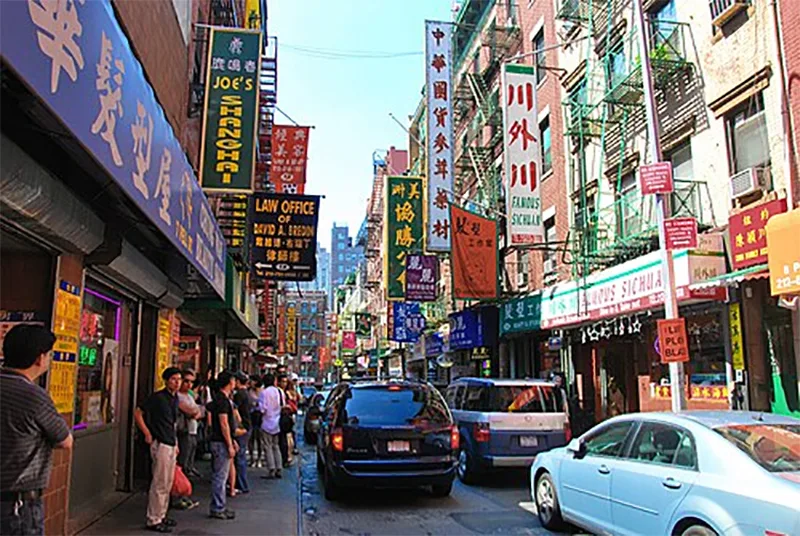
According to Yu Ying, the chief designer of the Manchu-style “Tang suits” worn by world leaders at the APEC summit, this Manchu-style Tang suit should actually be regarded as a general term for Chinese-style clothing. When the design team finished creating the outfit and began discussing what to name it, they ultimately decided on the name “Tang suit.” This decision was deeply influenced by the concept of “reimported interpretation” — that is, the way the term “Tang suit,” originally used overseas to refer broadly to Chinese attire, was reintroduced and accepted within China itself.
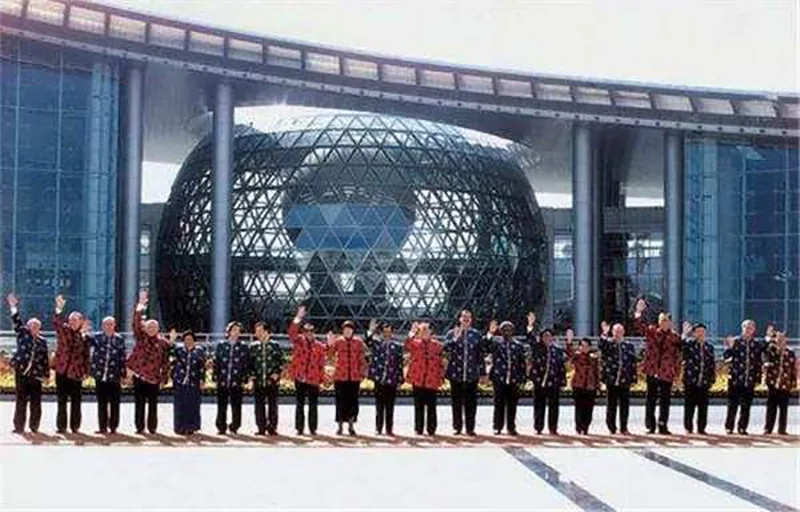
Features Of The Tang Suit
After the Manchus entered China, the Qing government enforced the policy of “changing hairstyles and clothing,” which mandated the wearing of Manchu-style attire. Although the Han Chinese and other ethnic groups found it difficult to accept such a drastic cultural change, they were ultimately forced to adopt Manchu dress under the Qing dynasty’s brutal rule.
The Tang suit actually evolved from the Magua, a traditional Manchu jacket from the Qing Dynasty. The classic Tang suit design is characterized by several key features:
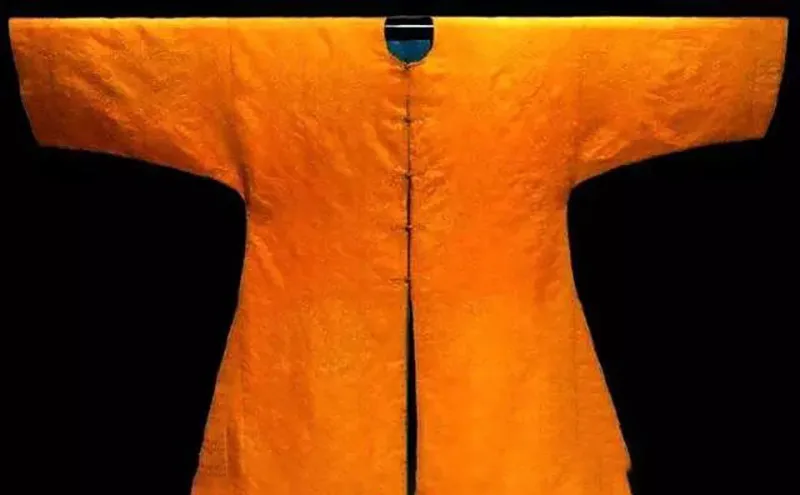
First, it features a stand-up collar, with a front opening running down the center of the jacket.
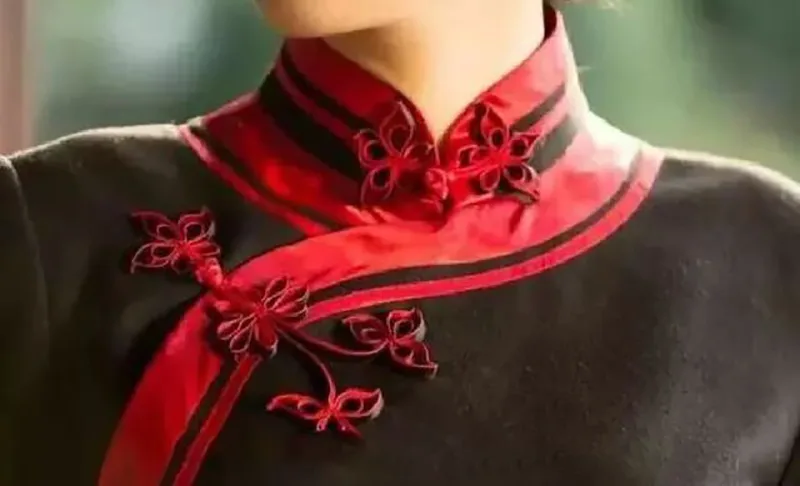
Second, it has continuous sleeves, meaning the sleeves are seamlessly integrated with the body of the jacket, primarily crafted using flat-cut techniques.
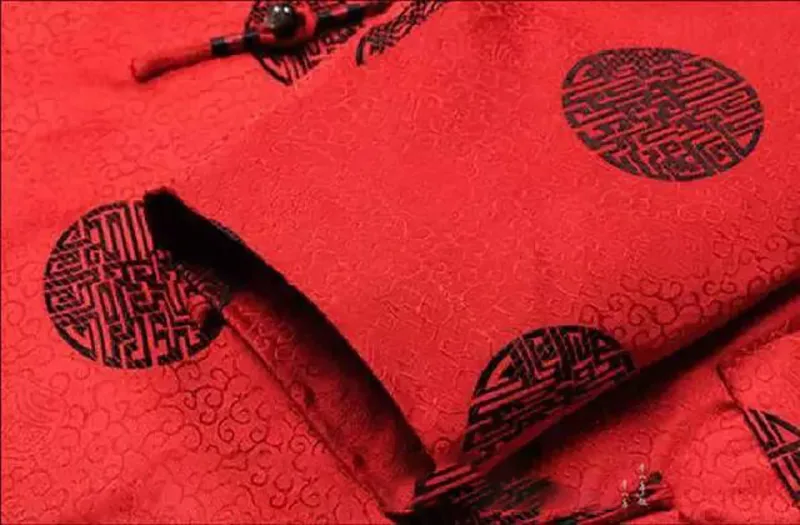
Third, it features a center-front closure, which can be either straight or slightly diagonal.
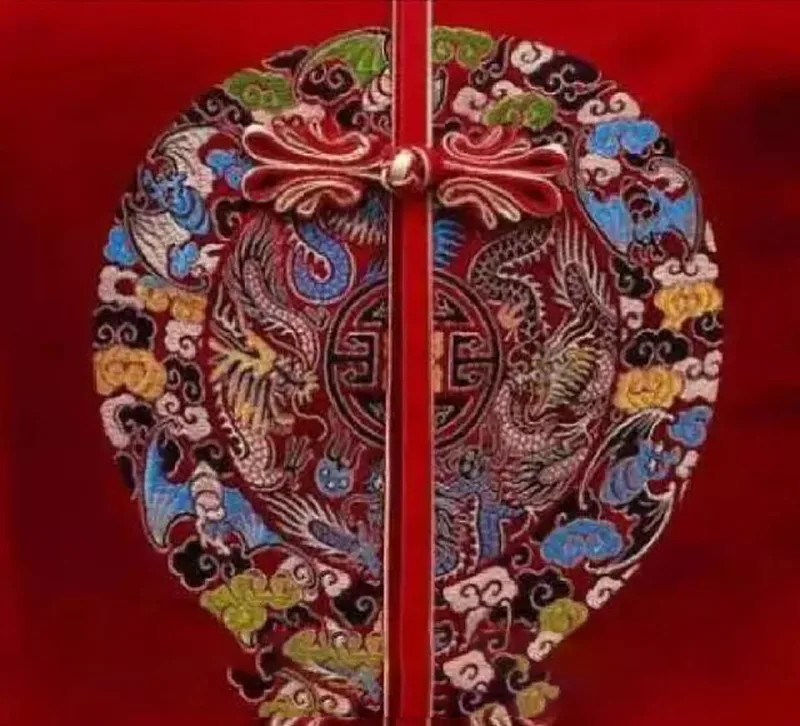
Fourth, it features right-angle buttons, also known as pankou (frog buttons), which consist of two parts: the knot and the loop. Exquisitely crafted pankou, with its distinctive design, emphasizes the art of the “coil” and serves as the finishing touch of the Manchu-style Tang suit, making it a detail of both practical function and artistic elegance.
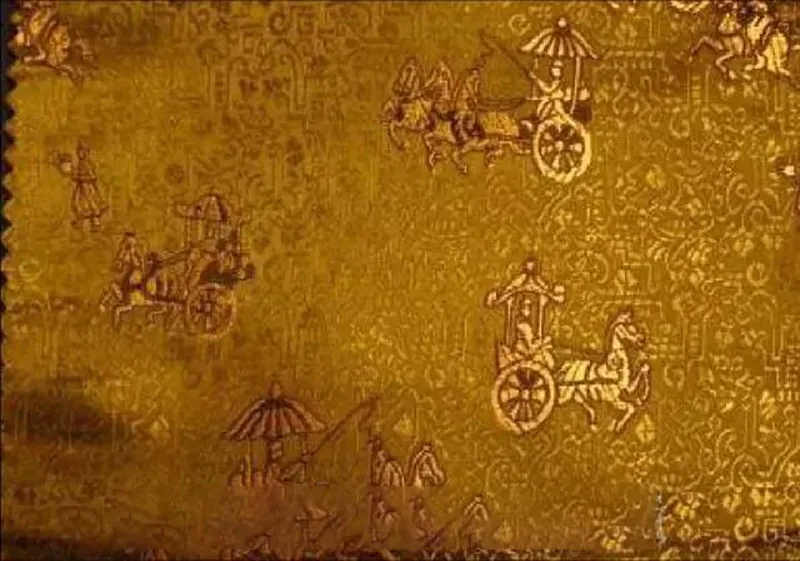
In terms of fabric, Tang suits are mainly made from brocade satin. It’s important to note that this style of “Tang suit” is not clothing from the Tang Dynasty, but rather a modernized version of the Magua.
The New Tang Suit
The New Tang Suit refers to the outfits worn by 20 world leaders at the 2001 APEC summit. It is essentially a fashionable design that combines the stand-up collar of the Manchu Magua with Western-style tailoring. The general appearance and style of the APEC leaders’ Tang suits can be described as follows:
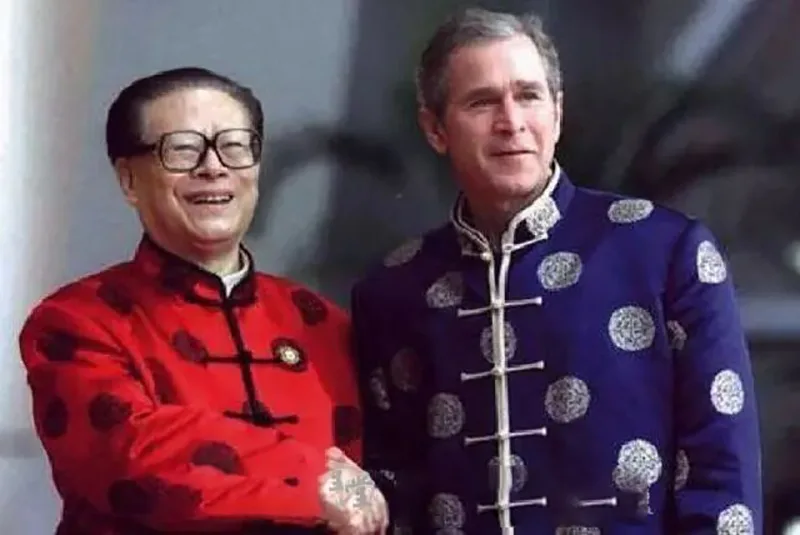
Jacket (Men)
Features a stand-up collar and center-front closure, with the collar edge and placket trimmed in contrasting piping. The front consists of two flat panels without darts or pleats, and a row of seven grape-shaped buttons is sewn along the placket. The back is made of two panels joined at a center seam, with sleeves set in from the two panels. Shoulder pads are included for structure, and side slits are added at the hem seams for ease of movement.
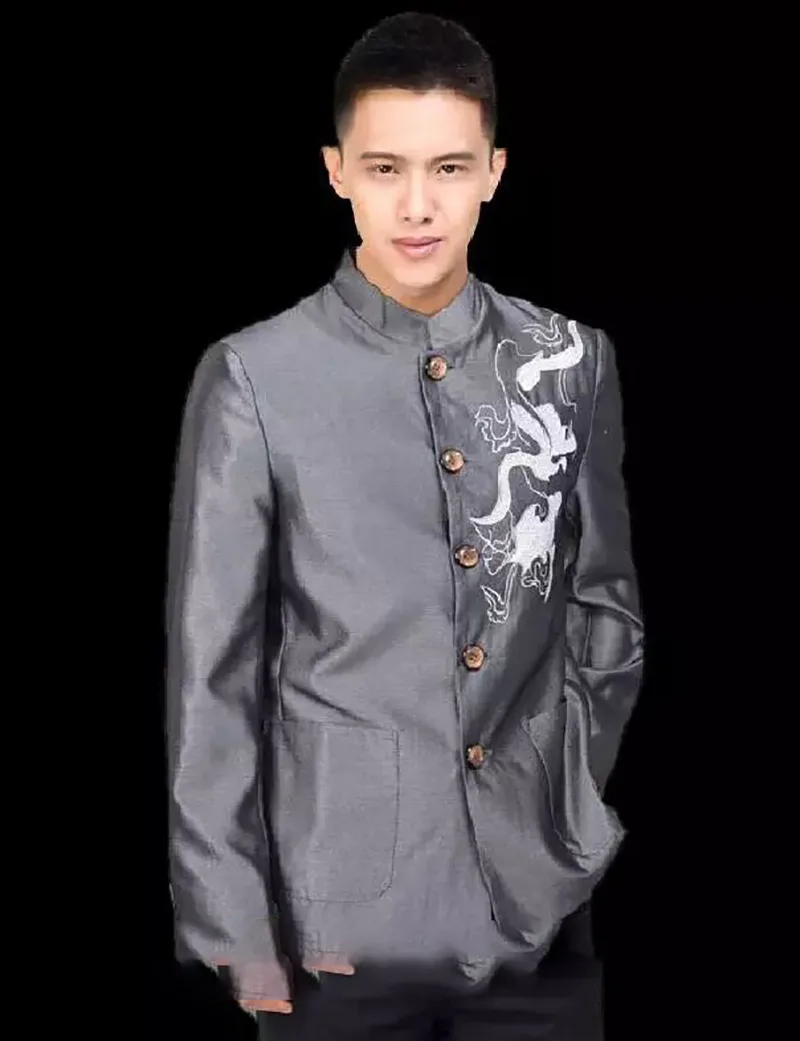
Jacket (Women)
Features a stand-up collar and center-front closure, with the cuffs, collar edge, and placket trimmed in contrasting piping. The front consists of two panels with waist darts and chest pleats, and a row of six grape-shaped buttons is sewn along the placket. The back is made of two panels with waist darts, joined at a center seam, with sleeves set in from the two panels. Shoulder pads are included for structure, and side slits are added at the hem seams for ease of movement.
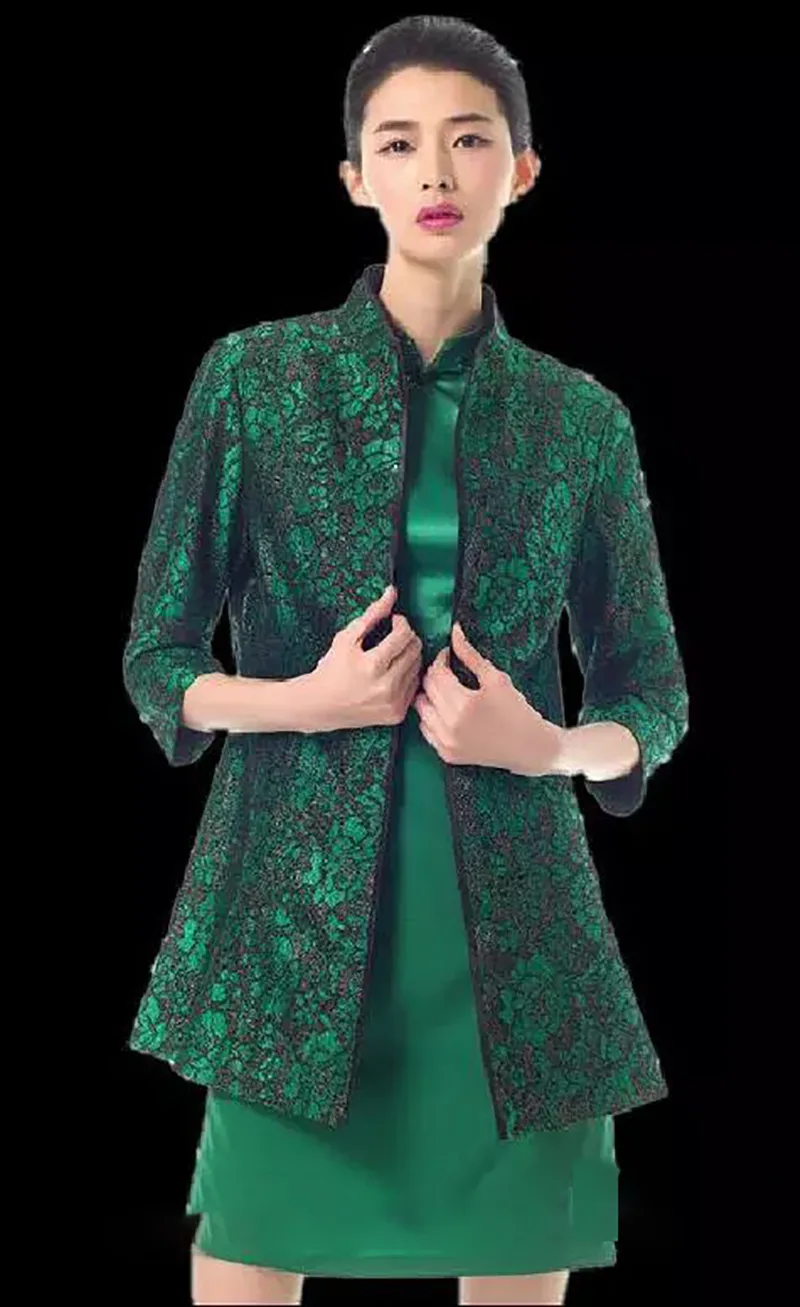
Shirt (Men)
Features a stand-up collar and center-front closure. The front consists of two panels with a single left chest pocket. Along the placket, nine dragonfly-shaped buttons are arranged to form three “王” (king) characters. The back is made of a single panel with double-layered shoulders, and the sleeves are long with a wide cuff, where three dragonfly-shaped buttons are arranged to form one “王” character.
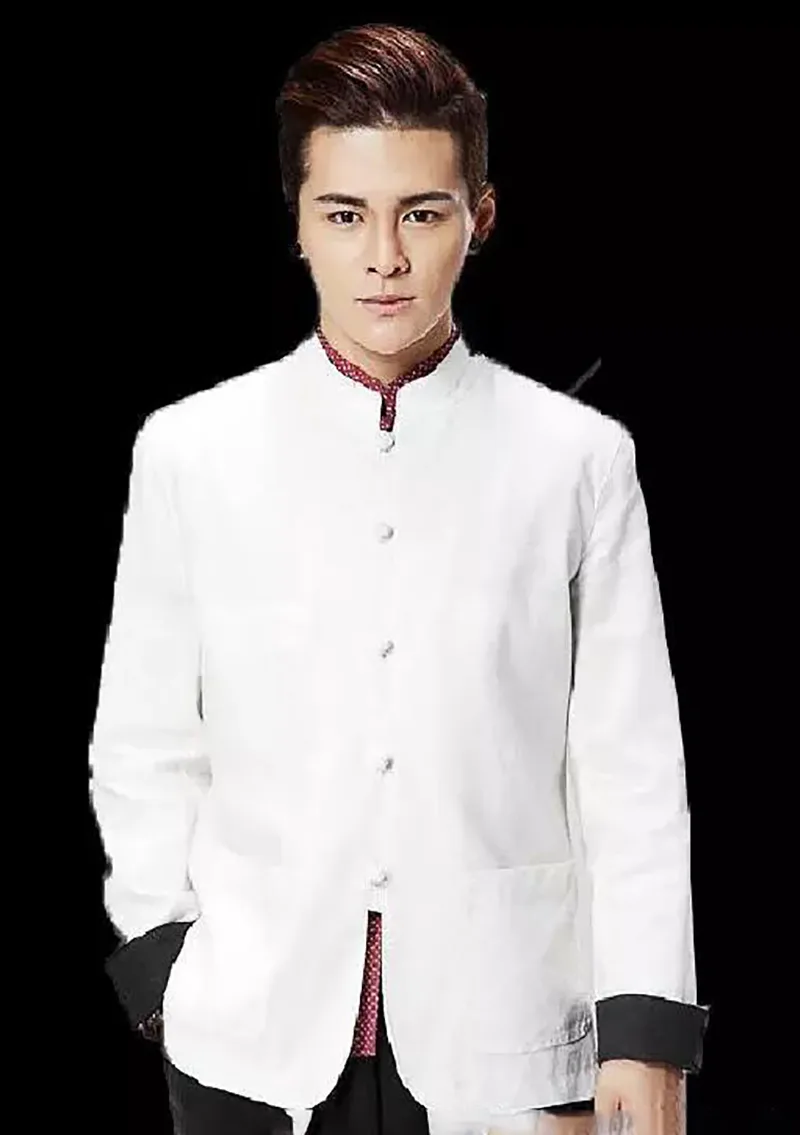
Shirt (Women)
Features a stand-up collar and center-front closure, with the cuffs, collar edge, and placket trimmed with contrasting piping. The front consists of two panels with waist darts and chest pleats, and a row of five dragonfly-shaped buttons is sewn along the placket. The back is a single panel with waist darts, and the sleeves are short.
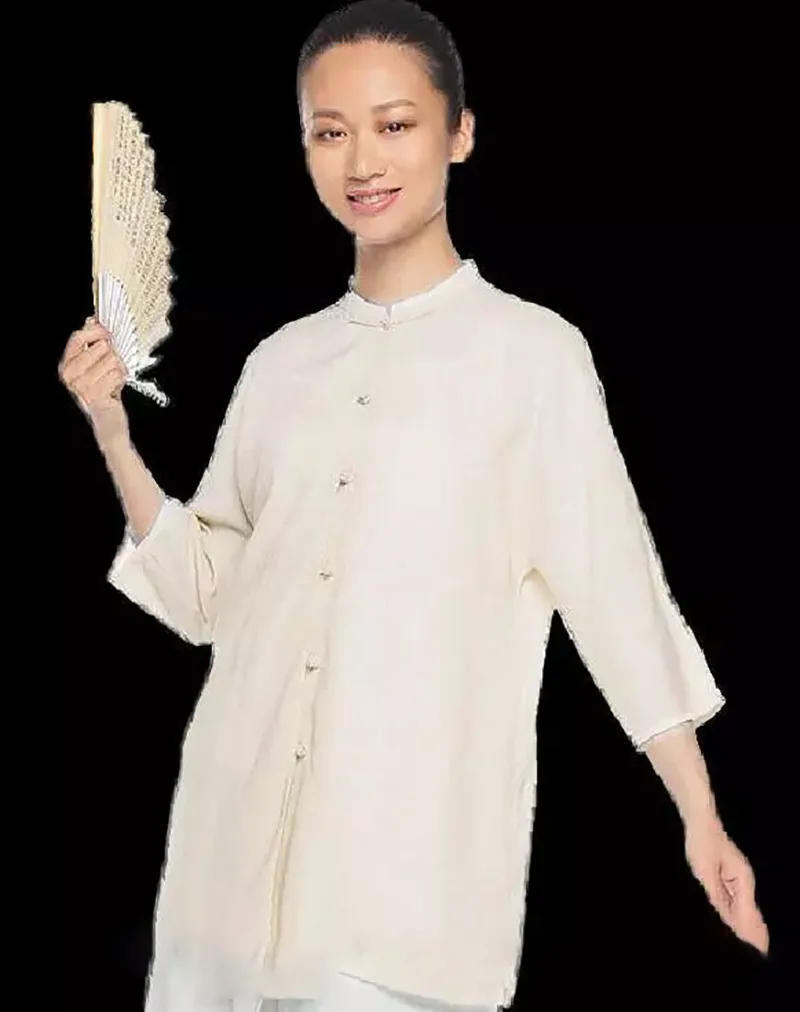
The seemingly simple yet actually intricate design of these jackets and shirts stands out not merely by chance. Their greatest success lies in faithfully capturing the essential features of traditional clothing: the stand-up collar, center-front closure, and handcrafted fabric buttons. The collar is always a stand-up style without a fold-down collar, the front closure is either center-front or slightly diagonal, the sleeves are either straight or continuous, and the vast majority of buttons are made from fabric. These fundamental, unchanging characteristics are widely recognized and appreciated around the world.
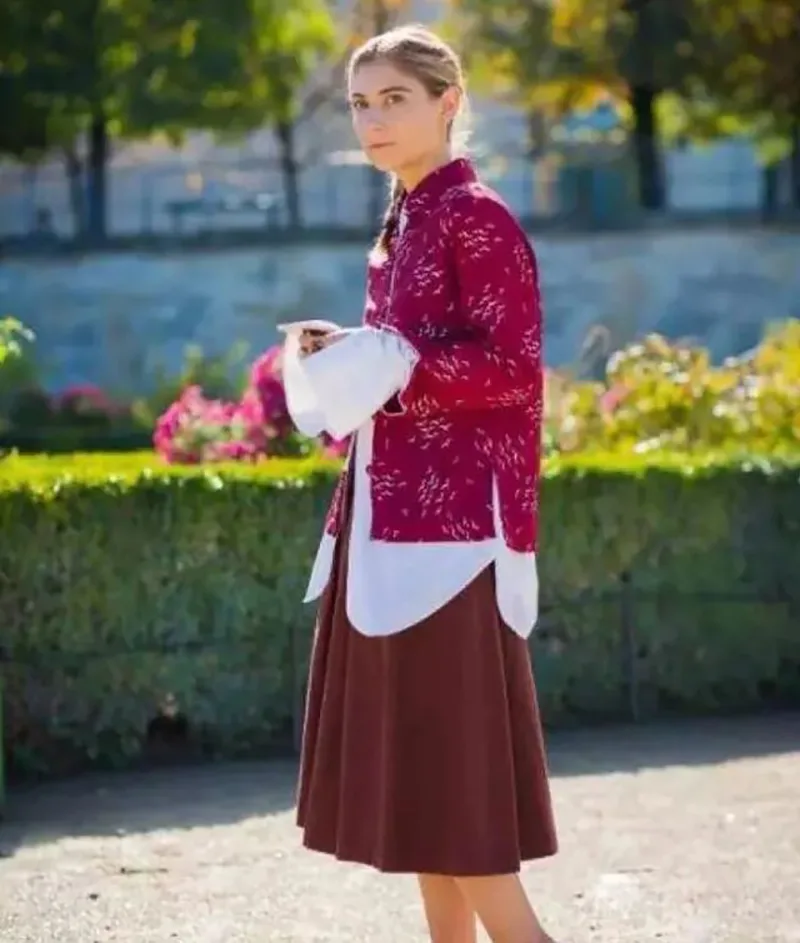
Of course, if the design of this clothing relied solely on Manchu-style features without incorporating modern tailoring, it would not have been successful. For example, traditional Manchu garments have undivided shoulders and sleeves, meaning the front and back panels are connected. While this construction provides comfort, it is not particularly flattering in appearance. Modern clothing, on the other hand, prioritizes aesthetics, emphasizing a perfect harmony between the garment’s shape and the human body, with particular attention to the shoulder and sleeve area. Therefore, integrating modern shoulder and sleeve design thoughtfully into the Manchu-style garments is a noteworthy innovation that enhances both form and function.
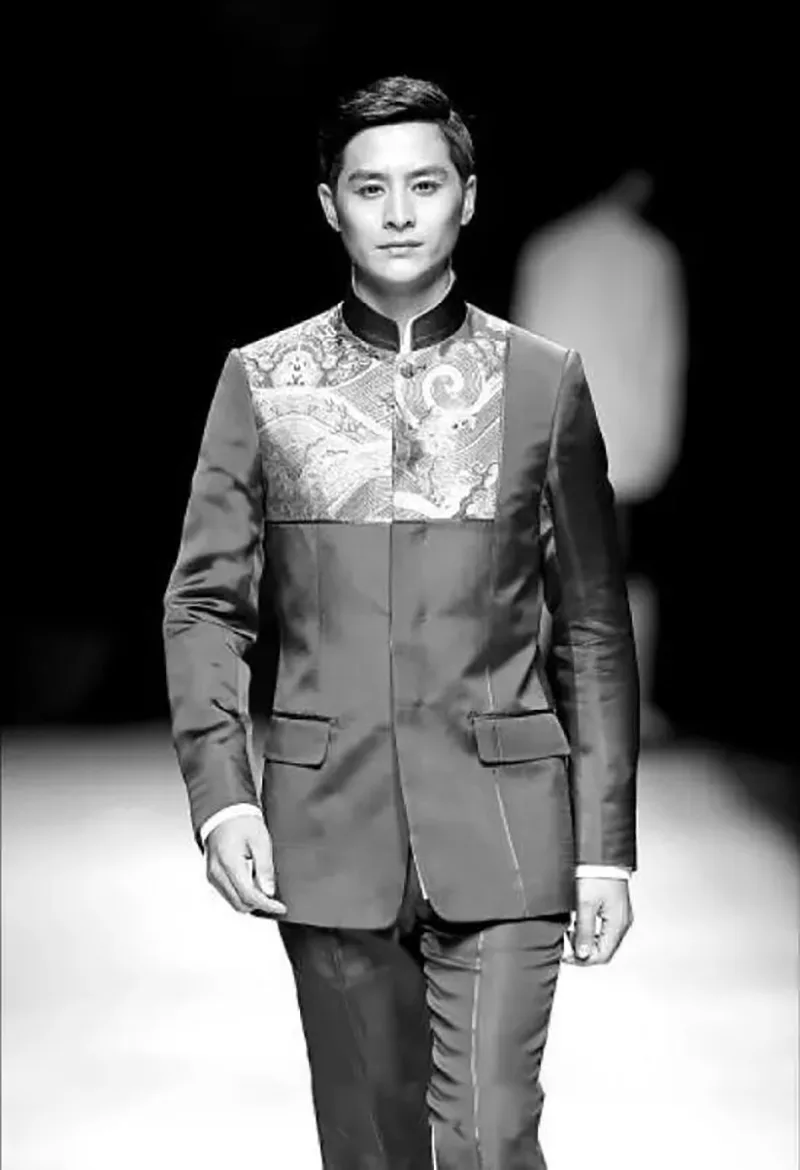
The Passionate Collision of Tradition and Modernity
The Manchu-style “Tang suit” is a harmonious blend of tradition and modernity, rooted in the classic Manchu Magua. It draws on the cultural charm, patterns, and fabrics of traditional Manchu clothing, while also incorporating elements of Western tailoring and design.
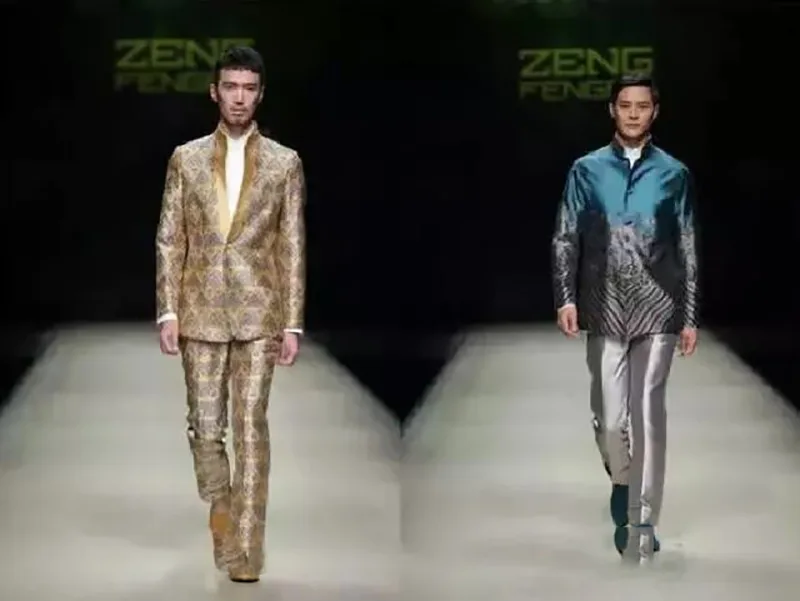
It inherits the key features of the Magua while improving upon the traditional design, bringing the Magua back into the realm of fashion. For example: traditional Chinese clothing rarely used continuous sleeves, because such sleeves eliminate a defined shoulder and make it impossible to add shoulder padding, which affects the garment’s silhouette. Traditional Chinese clothing was also waistless, so women’s figures lacked curves; modern designs now include waist shaping. In the past, skirts had very narrow hems, forcing small steps when walking, but today the skirts are widened for greater mobility. Similarly, Qipao in the Qing Dynasty featured very high collars; although modern versions are more open than before, the collar would still feel awkward if kept too high, so contemporary designs lower the collar for comfort and aesthetic appeal.
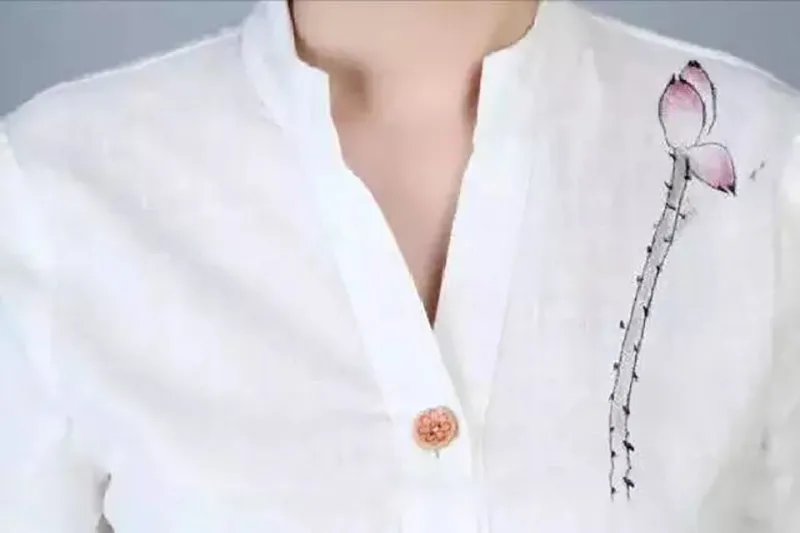
The fabric of Tang suits is no longer limited to brocade satin. Genuine leather Manchu-style Tang suits have entered the market and are gradually gaining popularity among white-collar professionals. The combination of leather with the Manchu-style Tang suit not only preserves the original elegance, luxury, and relaxed charm of the traditional design, but the leather material and craftsmanship also give it a crisp, structured look. By incorporating some Western-style features, the Tang suit has expanded beyond its traditional role as workplace or festive attire, making it suitable for everyday wear and professional settings, thereby broadening the occasions where Tang suits can be worn.
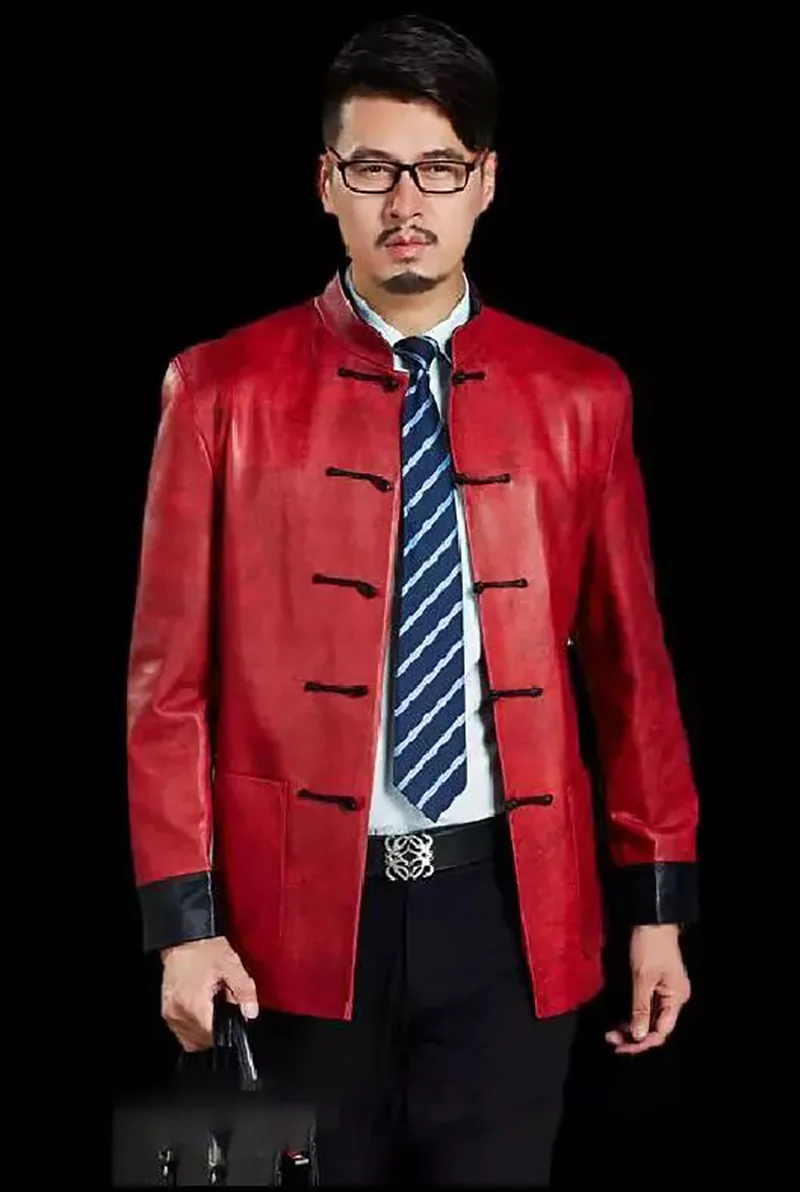
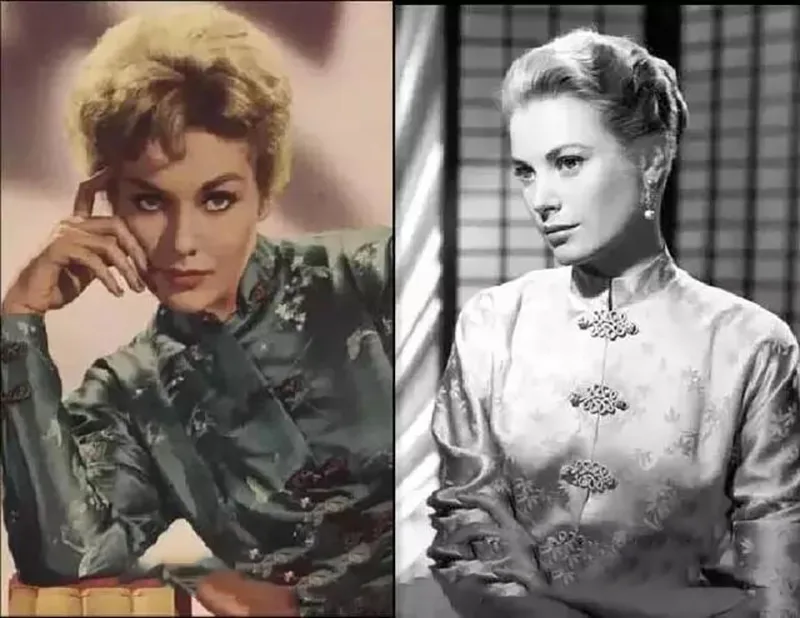
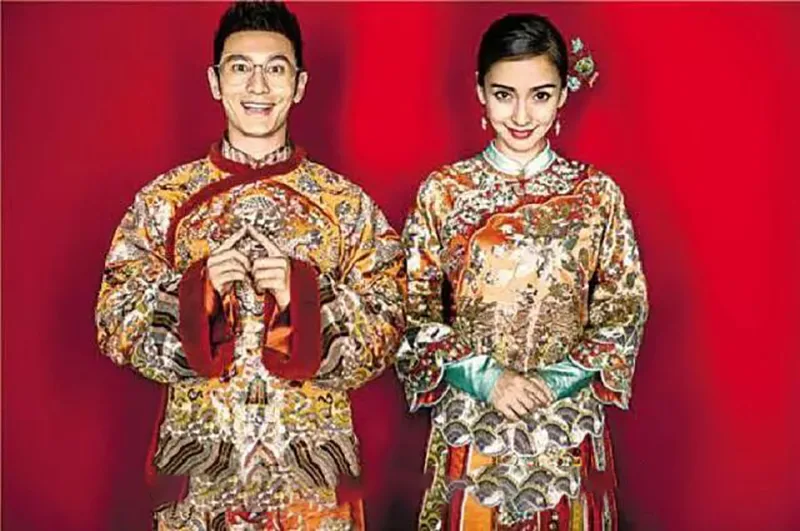
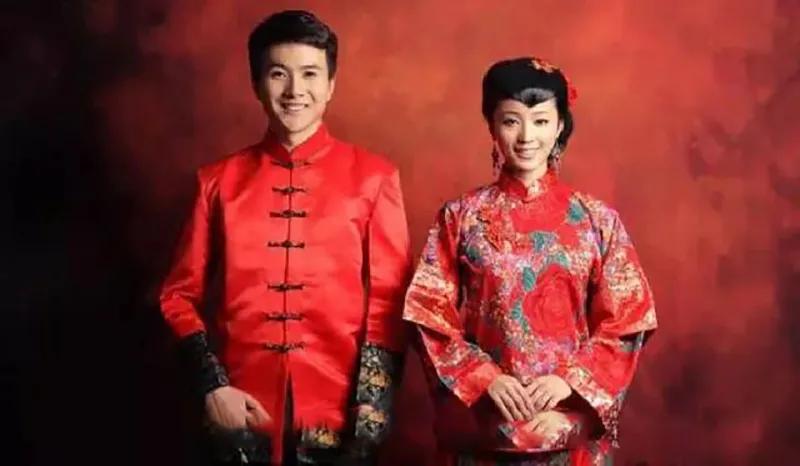
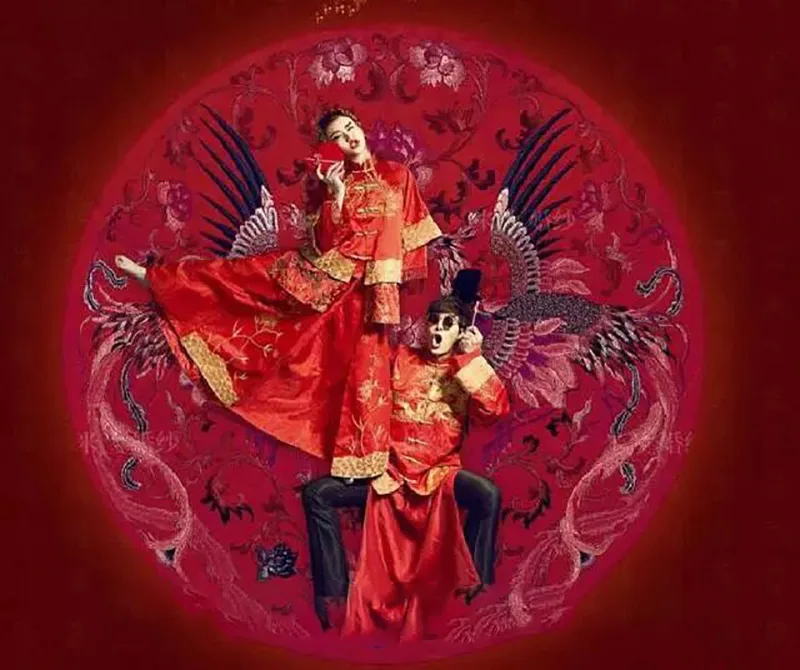
Tang Suit Craftsmanship
Fabric
Tang suits are generally made from natural fabrics such as silk and brocade satin. Since these materials tend to shrink, it is important to consider both the fabric properties and your personal style when selecting a garment. Additionally, the preferred fabrics and styles vary between younger and older wearers. Younger individuals are recommended to choose silk or satin fabrics for a more suitable and stylish look.
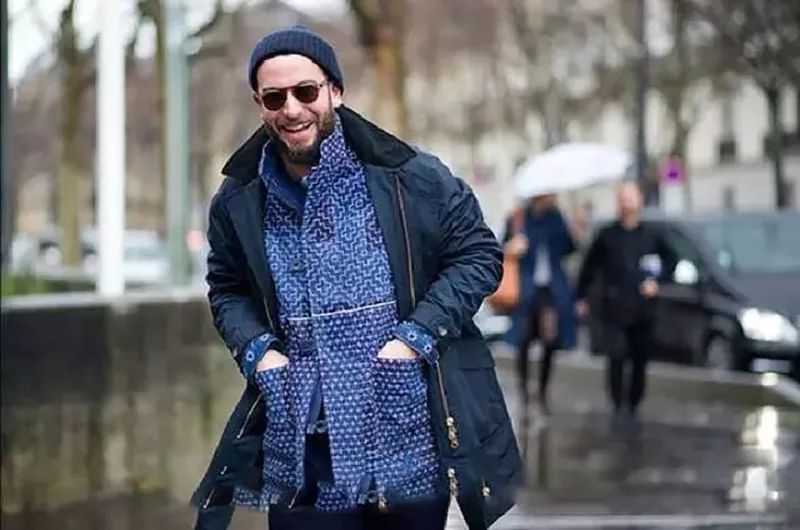
Nowadays, many different fabrics can be used to make Manchu-style Tang suits. For men, the sturdiness and casual feel of denim often suit the masculine aesthetic better than soft silk. If denim feels too casual, one can try the luxurious combination of leather or fur with exquisite pankou (frog buttons). Using leather for a Manchu-style Tang suit adds a robust, rugged quality, making it particularly well-suited for men.
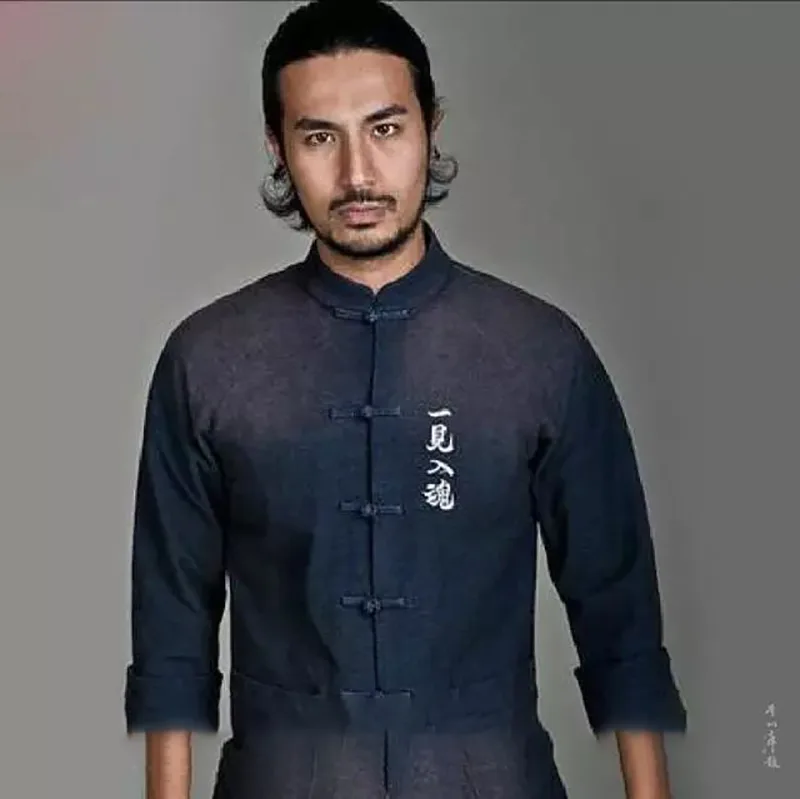
Styles
Fully Retro Type
For women, this style features all the classic elements of traditional Tang suits, including brocade satin, pankou (frog buttons), and embroidery, faithfully following the Qing Dynasty design. It is often worn for weddings or festive occasions. Foreigners tend to favor this type, as it allows them to experience the authentic charm of Qing-era fashion.
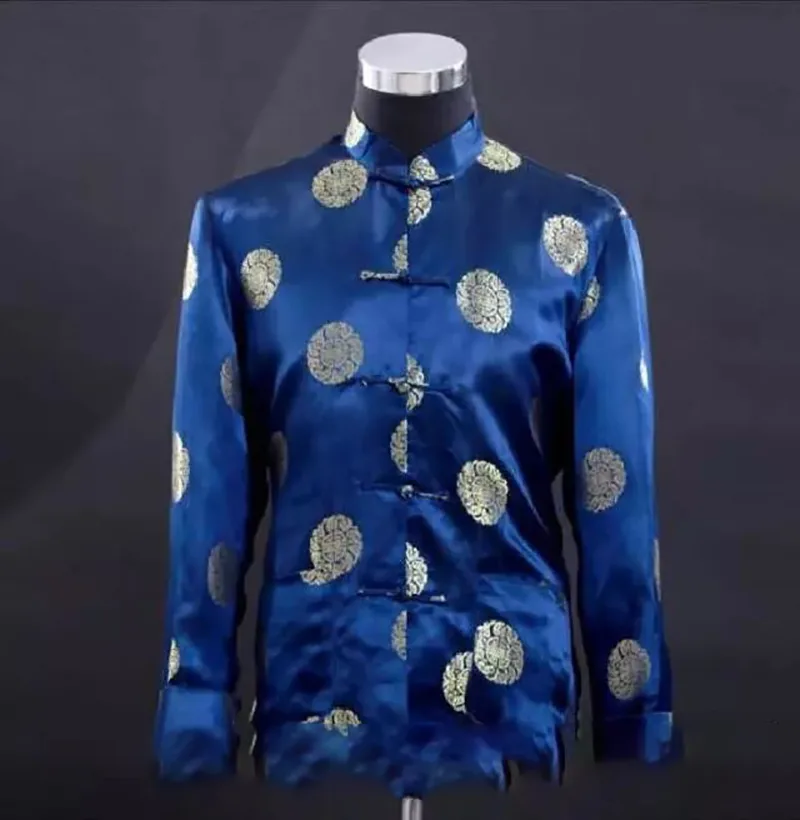
Ethnic Style
Also a type of Chinese-style clothing, this style emphasizes ethnic characteristics. It often incorporates traditional Chinese elements—such as Chinese characters or poetry—into modern garments. The fabrics are usually cotton or linen, combining modern materials with traditional craftsmanship. This style is not limited to Manchu-style Tang suits and is also commonly seen in casual wear.
Discover the elegance and timeless charm of traditional Chinese attire with our carefully crafted Tang suits. Combining the classic features of the Manchu Magua with modern tailoring, these suits are perfect for festive occasions, daily wear, or adding a touch of cultural sophistication to your wardrobe. Explore our full Tang Suit Collection ,and find the perfect Tang suit that blends heritage and contemporary style.
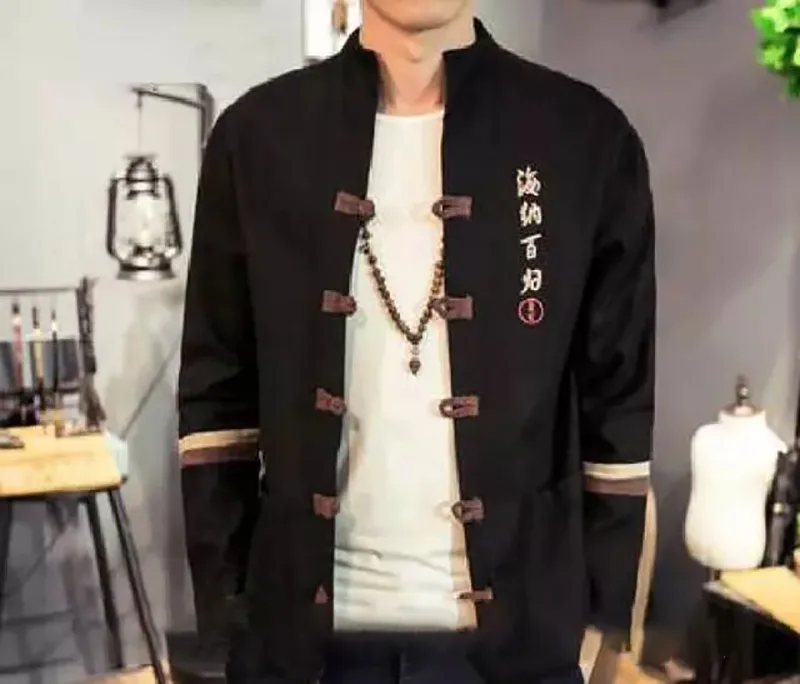
Fashionable Style
This type of Chinese-style clothing is closer to modern fashion, often using fabrics such as satin combined with double-sided shimmering linen for a contemporary feel. It blends traditional lines with modern design elements, appealing mainly to young, fashion-conscious buyers. Printed fabrics, small stand-up collars, and central button closures are typical features of the Manchu-style Tang suit in this category.
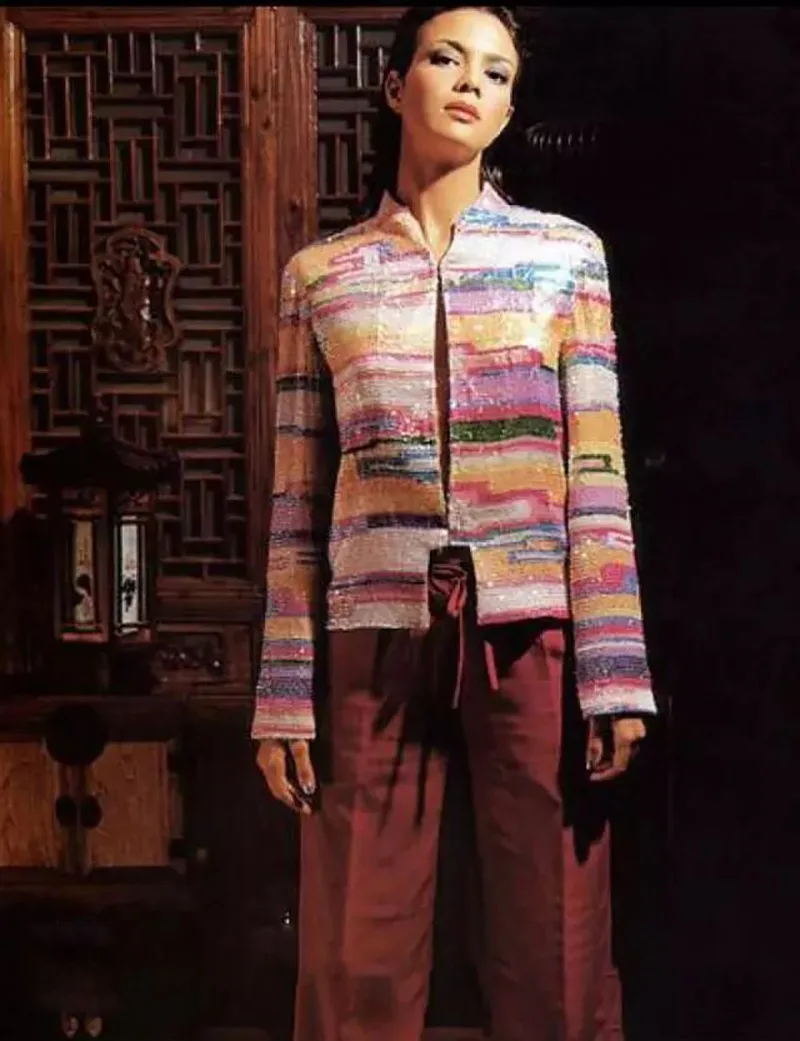
Today’s fashionable Manchu-style Tang suits have evolved in many ways compared to the older designs. For instance, round collars have been changed to square ones, and center-front closures have been adapted into asymmetrical styles. By incorporating the essence of Western fashion, Tang suits have shed their once-rigid appearance. Modern versions now include knitted tops, jackets, and trousers in a wide variety of styles, making them a true fusion of tradition and modernity. They preserve the cultural elegance of traditional Chinese garments while embracing the three-dimensional tailoring of Western fashion, turning the Tang suit into a striking presence on contemporary streets.
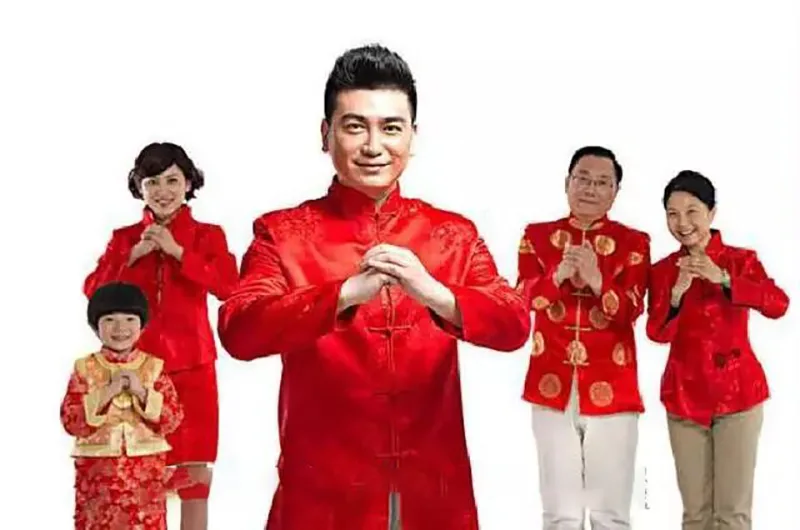
Selection Tips
Traditional Tang suits typically come in red, black, or royal blue, often adorned with gold and silver brocade patterns, motifs symbolizing good fortune and harmony, and handcrafted pankou (frog buttons). Modern Manchu-style Tang suits, however, have embraced contemporary fashion influences, so their colors are no longer limited to the traditional bright reds and greens—now they come in a wide variety of vibrant and diverse hues, offering something for every taste and occasion.
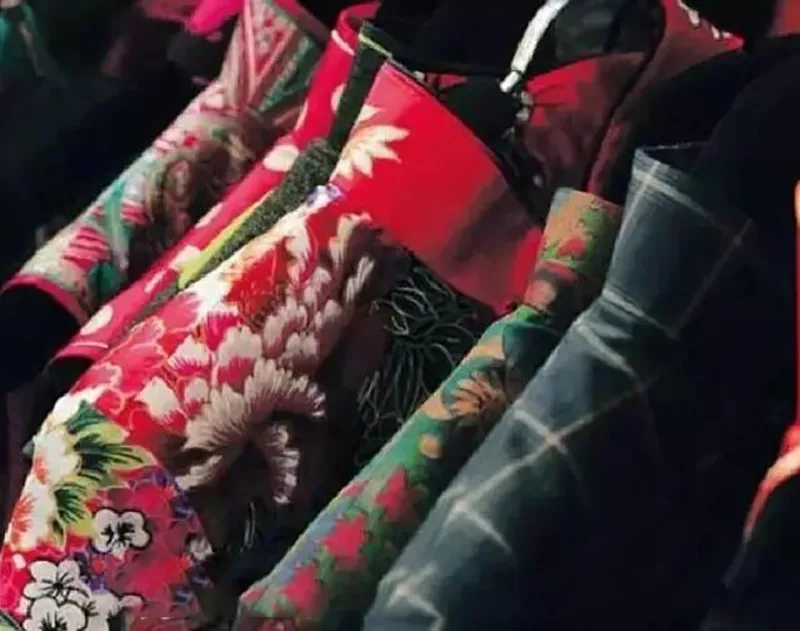
When choosing a Tang suit, it’s important to select one that suits your body shape, skin tone, and personal style. For those with darker or warmer skin tones, opt for bright, warm colors—they can make you look more energetic and festive. Older individuals don’t necessarily have to stick to muted tones; in fact, modern styles in brighter colors can make you look more youthful and vibrant.
During the Spring Festival, many people prefer wearing red Tang suits decorated with traditional round floral motifs symbolizing good fortune and family unity. However, you might also consider softer, more refined neutral tones such as lavender gray, pale lilac, olive green, or sage, which offer a refreshing and elegant alternative while still capturing the festive spirit.
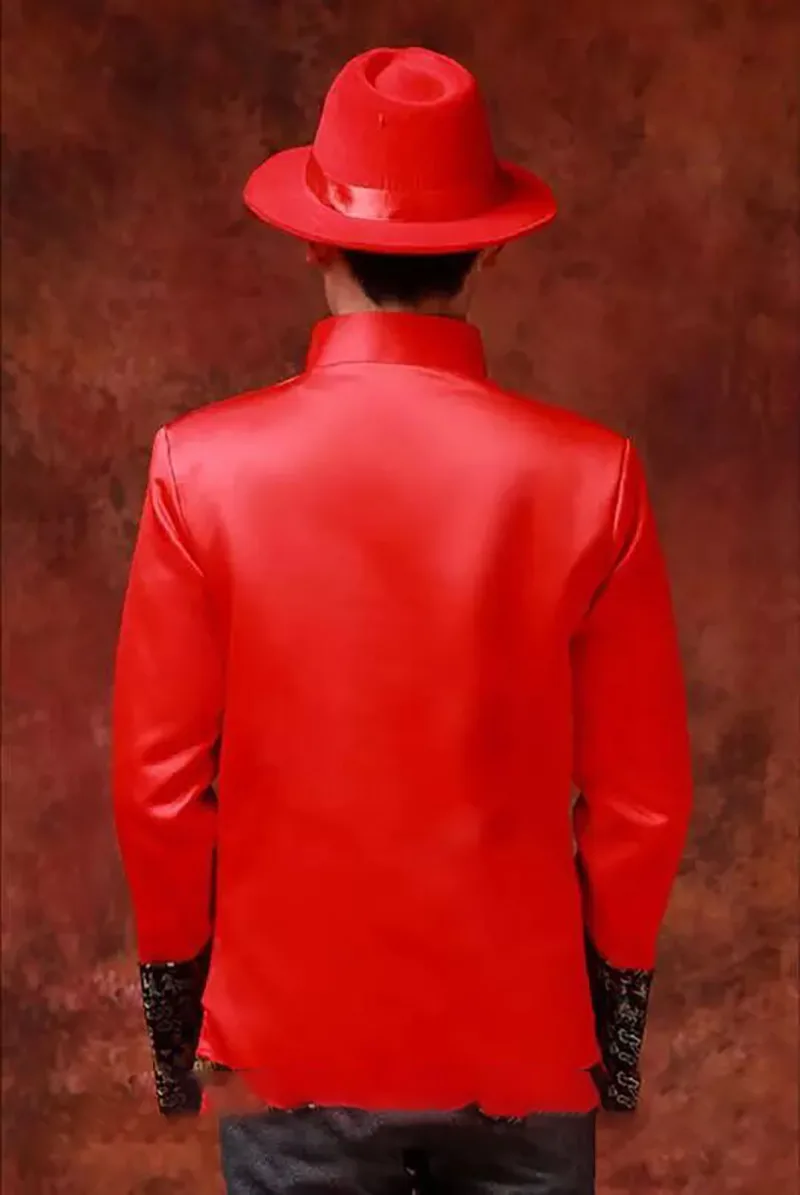
In terms of patterns, circular floral motifs remain the mainstream. These designs typically radiate or swirl outward from the center and often feature traditional flowers such as peonies, plum blossoms, orchids, bamboo, and chrysanthemums. Other popular motifs include auspicious Chinese characters like Fu (good fortune), Lu (prosperity), Shou (longevity), and Double Happiness. In recent years, more contemporary patterns have also been incorporated into Tang suits, such as willow leaf motifs, embossed geometric designs, and abstract patterns. Intricate hand-embroidered details on selected areas have become especially popular, adding a refined and fashionable touch to the overall design.
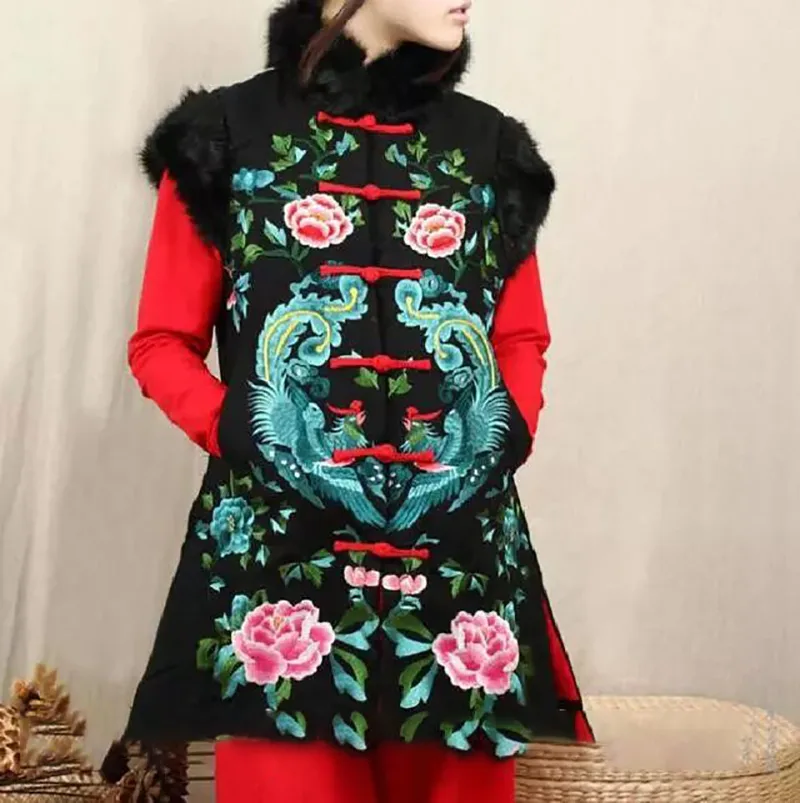
Accessories & Styling
Modern Tang suits have evolved beyond the traditional magua (Mandarin jacket), blending in a variety of contemporary style elements while preserving their classic charm. The key is to express your own personality and inner feeling—pair the outfit with the right hairstyle, makeup, and accessories, and you can create your own unique interpretation of the Tang style.
For those who appreciate tradition, classic accessories such as jade bracelets, pendants, or floral hair ornaments make excellent choices. However, moderation is essential—just one or two well-chosen pieces can enhance your look elegantly. Over-accessorizing, on the other hand, may take away from the refined beauty of the Tang suit.
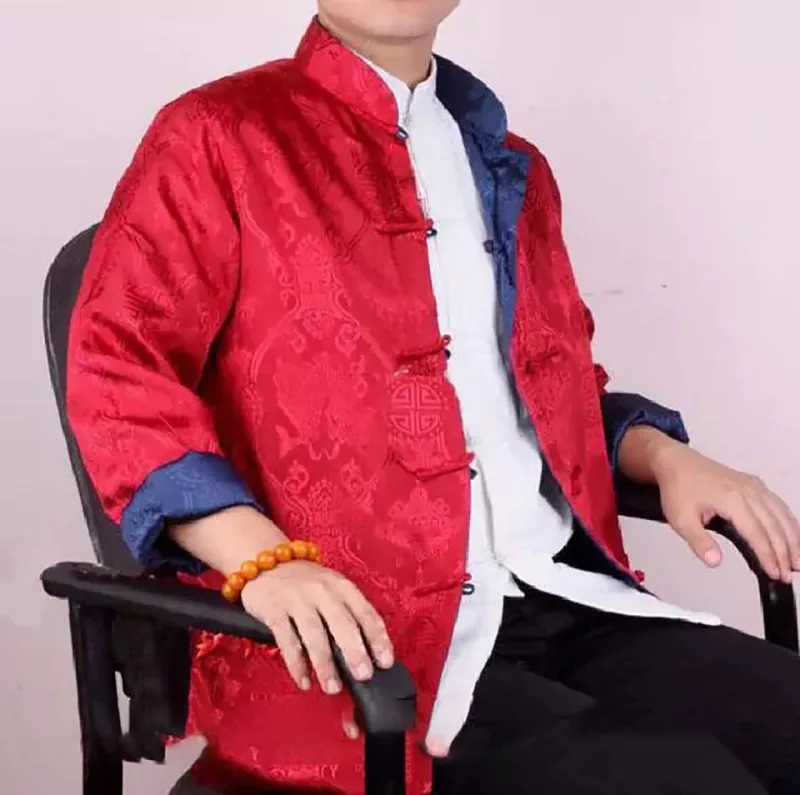
Fashion Pairing
Tang Suit + Jeans:
Embroidered and beaded jeans, which have been popular for the past few years, may be nearing the end of their trend cycle—but if you still love them, pairing their colorful designs with an equally vibrant Tang suit can create a surprisingly stylish combination.
For a more avant-garde or postmodern twist, try matching a Tang suit with oversized HIP-HOP–style baggy pants. Who says tradition and street fashion can’t look good together?
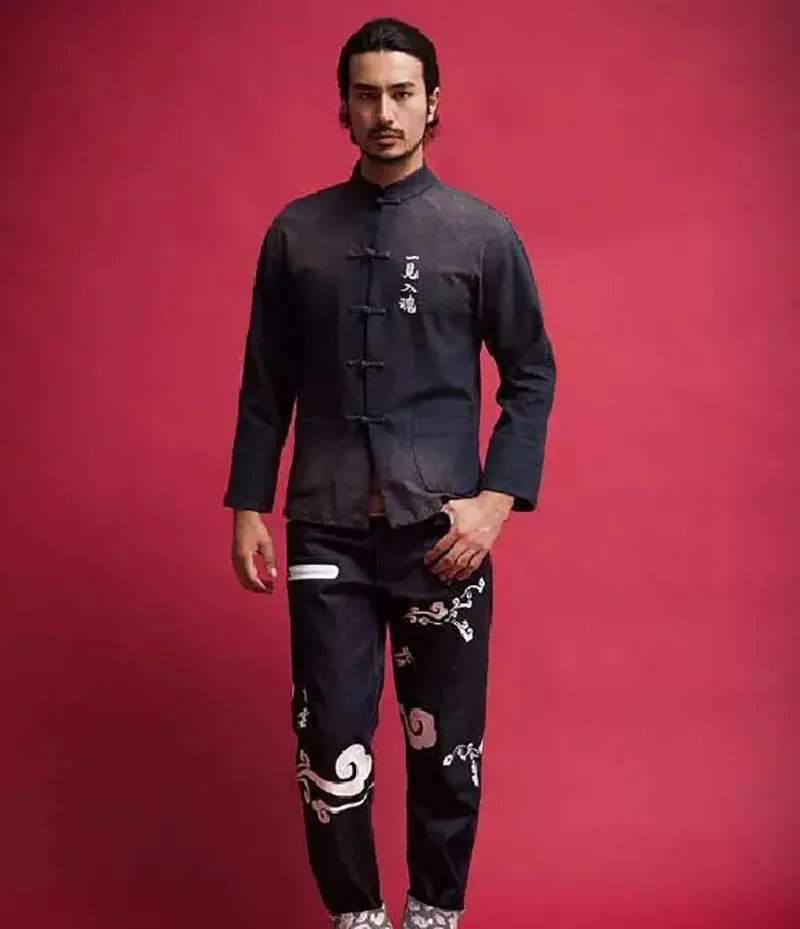
Tang Suit + Lantern Pants:
With the rise of the Indian-inspired fashion trend, lantern pants—known for their gathered cuffs tied with delicate strings—have become a stylish favorite. The richly patterned fabrics and intricate gold-and-jade textures of traditional Tang suits share a similar ornate aesthetic with Indian designs. When paired together, the Tang suit and lantern pants create a perfectly harmonious and exotic look.
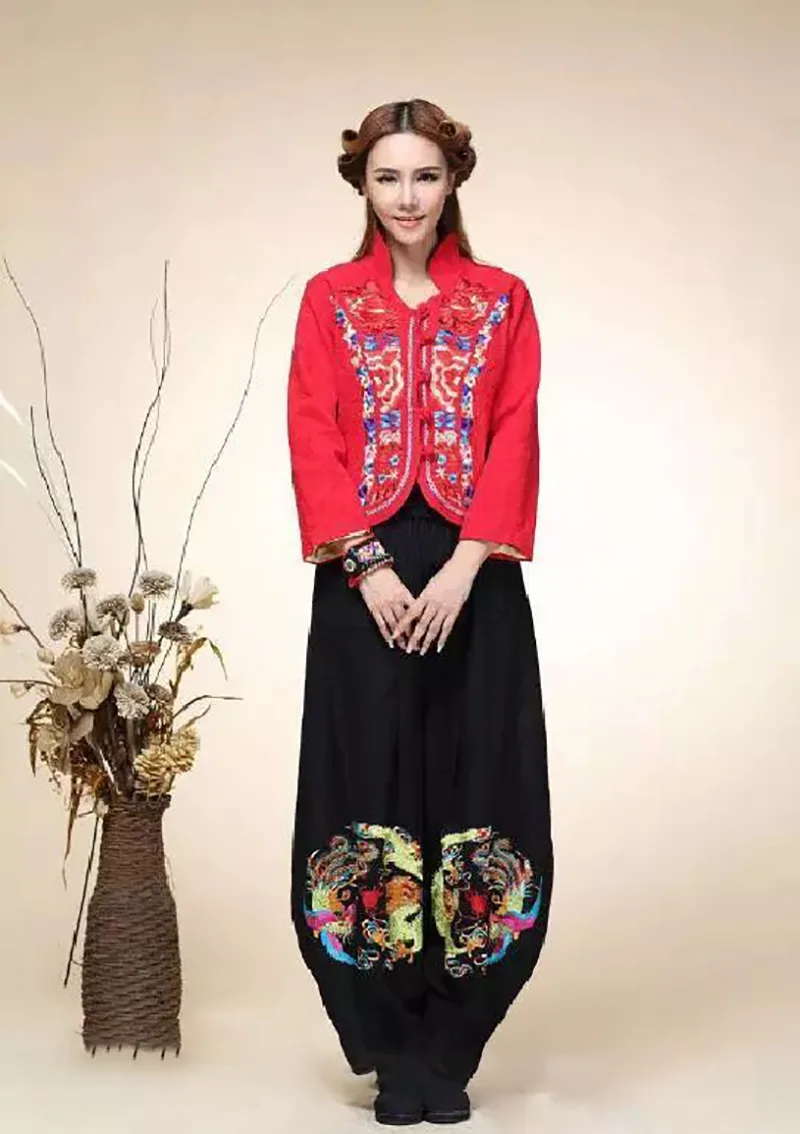
Tang Suit + Cropped Pants + Long Boots:
This winter’s trend of wide-legged cropped pants pairs beautifully with a fitted Tang suit top, creating a silhouette reminiscent of the graceful Hui’an women of southern China. Add a pair of long boots with buckles, and the whole look comes alive—bold, dynamic, and full of movement.
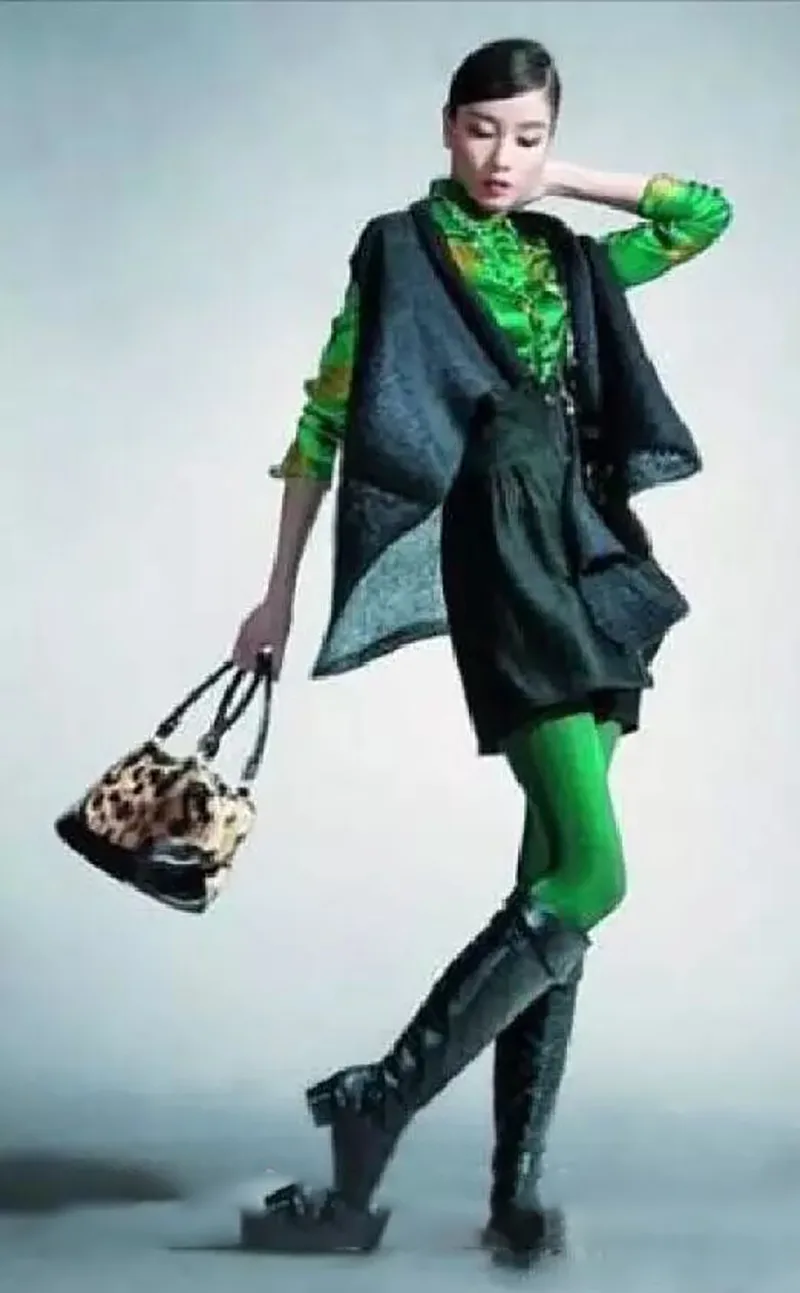
Tang Suit + Short Skirt:
A Tang suit actually pairs naturally with a pleated skirt—just like the look of female college students during the May Fourth era. Of course, since those days are long gone, you can update the look with a short skirt instead. To avoid appearing top-heavy, add a playful touch with colorful stockings. For a refined and elegant vibe, go with burgundy; for something cute and lively, try multicolored plaid; and for a sexy edge, nothing beats fishnet tights. Especially if you’ve got beautiful legs, people’s attention will naturally be drawn to your stockings—no matter how simple your Tang suit is, you’ll still stand out effortlessly.
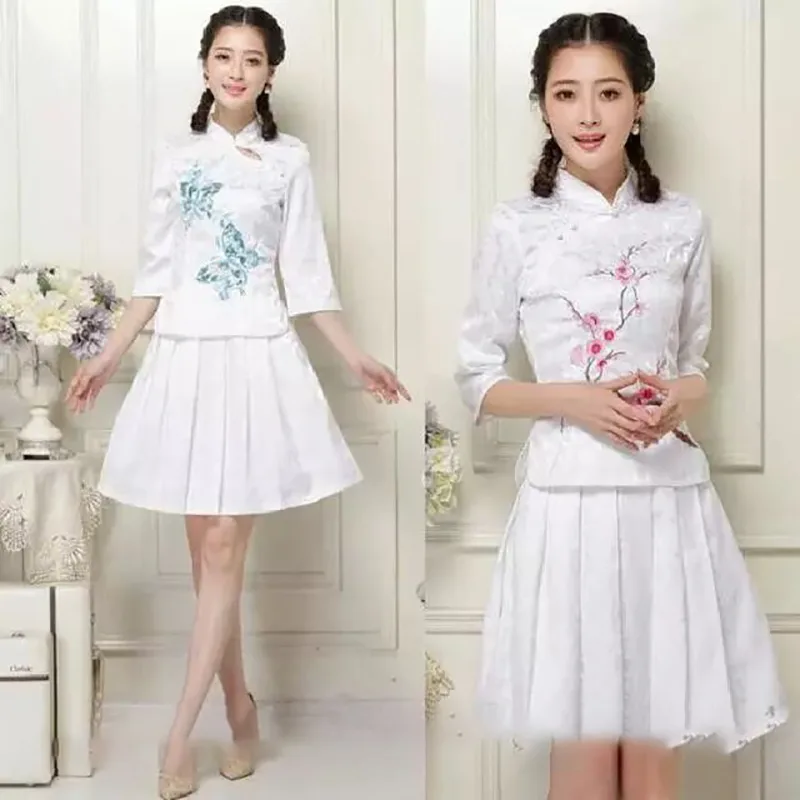
Tang Suit + Little Black Dress:
For a loose-fitting Tang suit, try pairing it with a little black dress. The understated elegance and quiet depth of the black dress beautifully complement the rich textures and intricate patterns of a Man-style Tang suit. This combination creates a perfect harmony between Western sophistication and Eastern classical charm—subtle yet stunning.
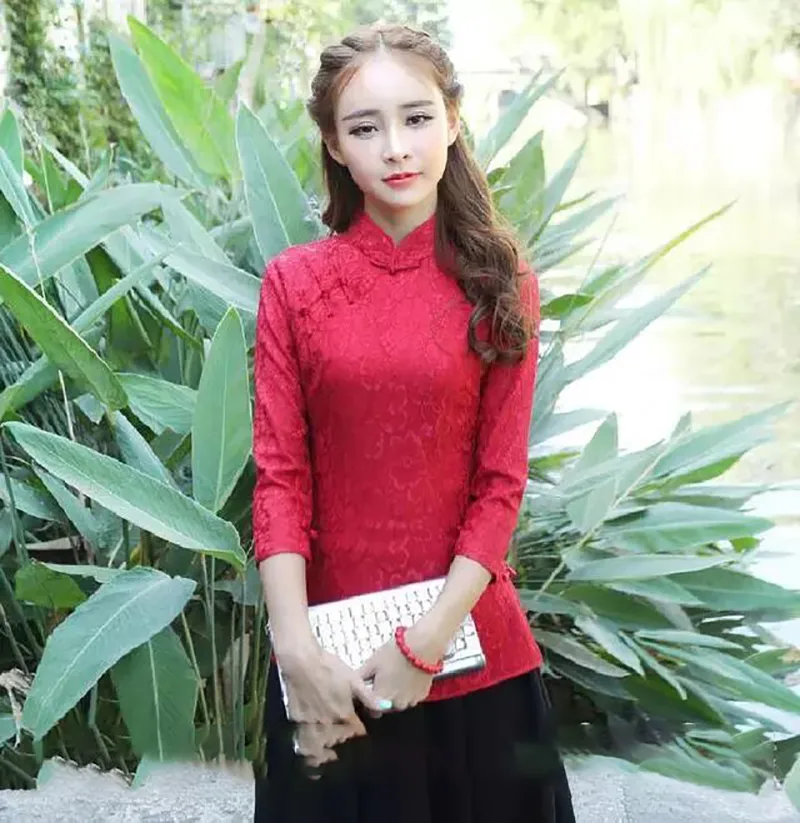
Jackie Chan: “A Tang suit instantly lets foreigners recognize someone as Chinese.”
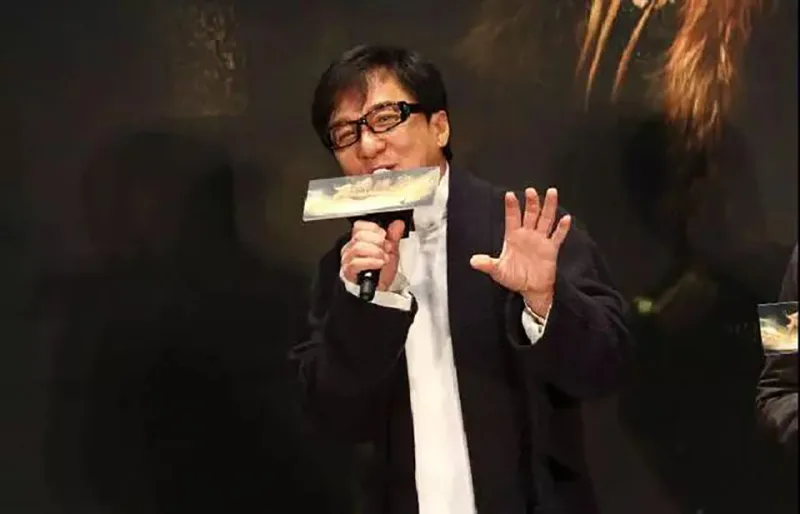
Jackie Chan is considered the “ambassador” of the Tang suit. When asked why he loves wearing Tang suits so much, he explained:
“In many places, Asians all look the same to them, and if we all wear suits, they can’t tell us apart. I thought to myself, no, from now on I want people to know I’m Chinese the moment they see my clothes. So I started wearing Tang suits. Over time, people would immediately recognize, ‘Oh, you’re Chinese.’”
Since then, most of us associate his image—especially at important domestic and international events—with the Tang suit, as he often appears in this traditional attire.
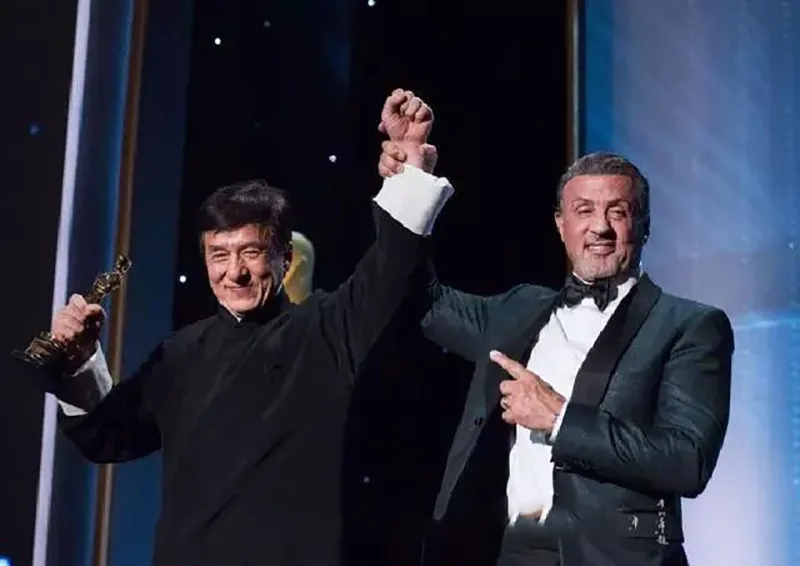
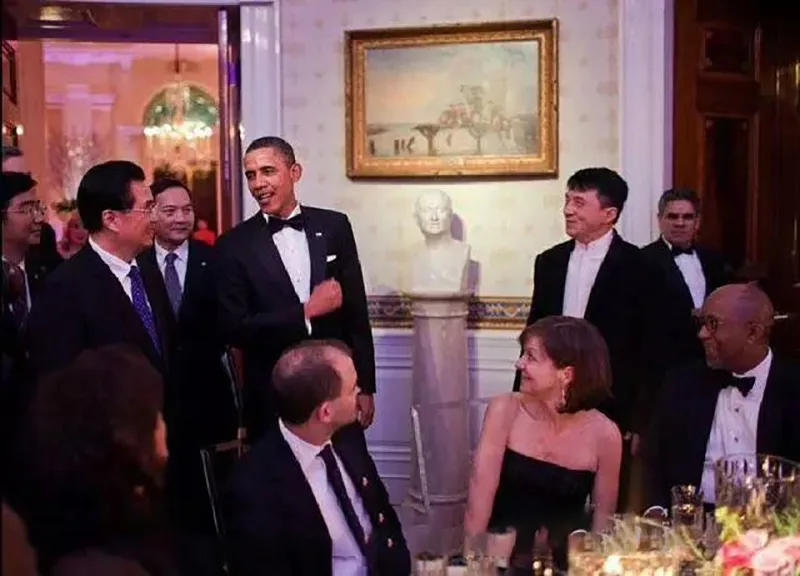
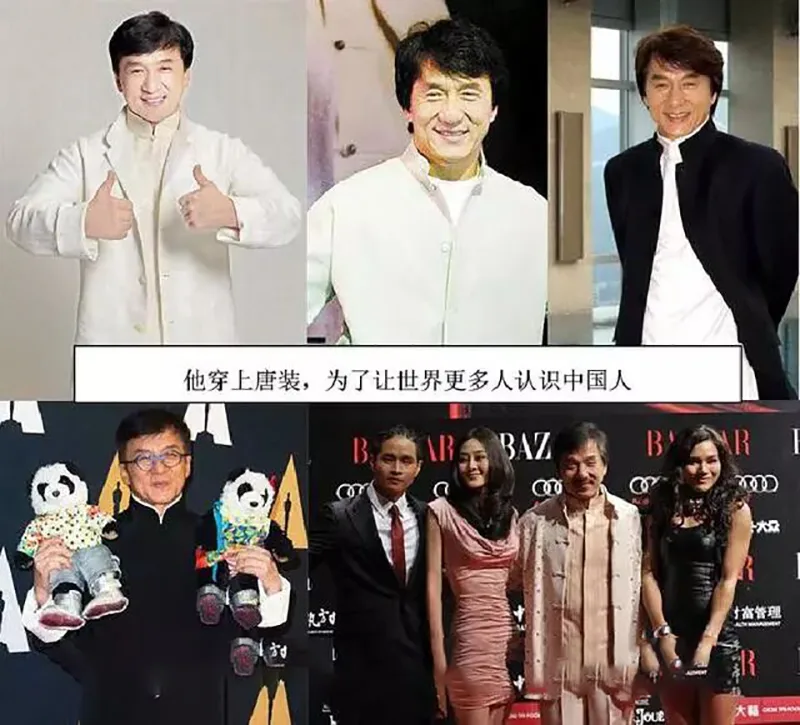
Celebrity Wearers
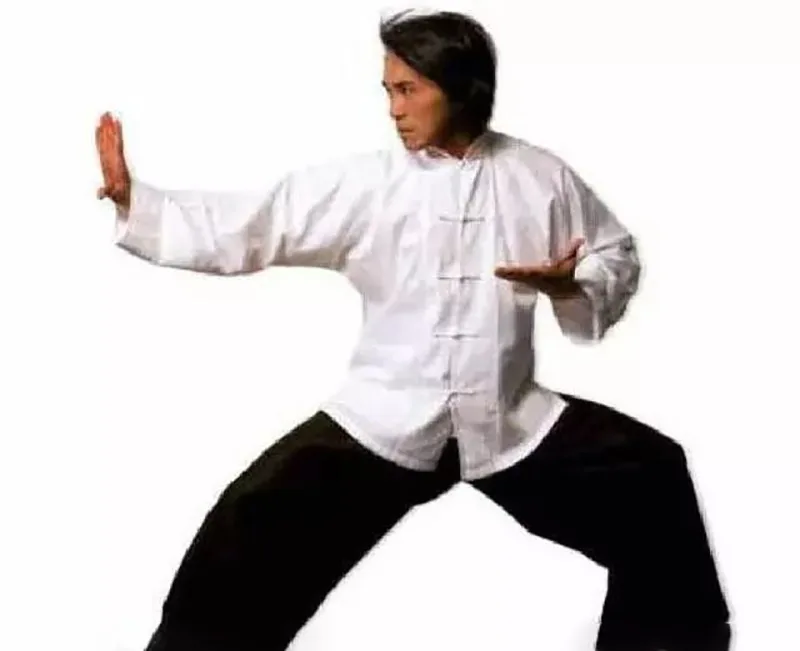
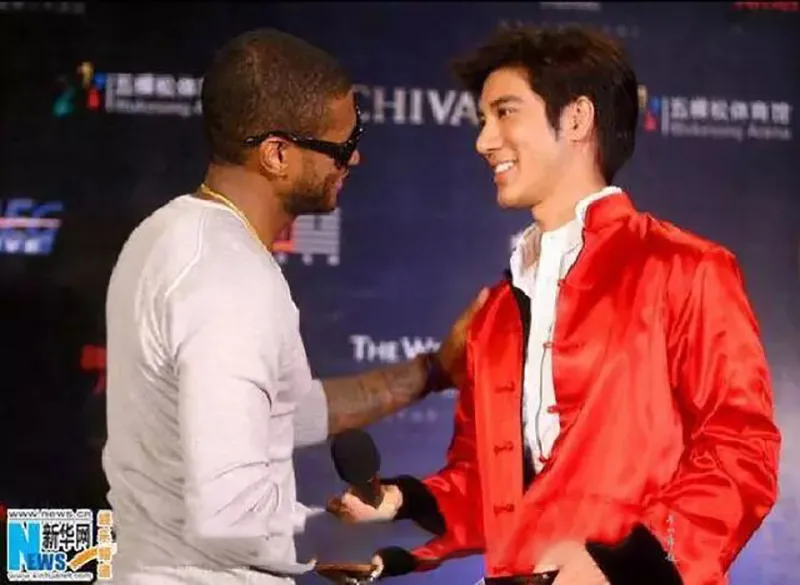
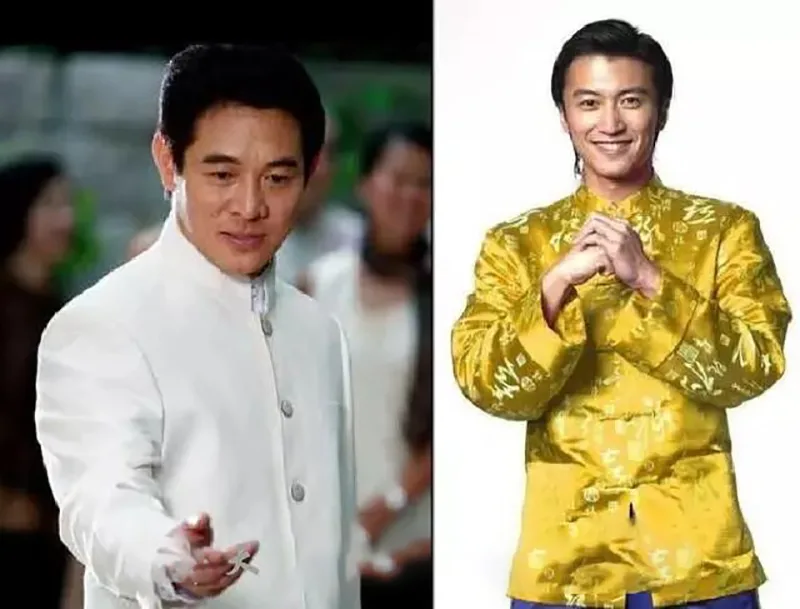
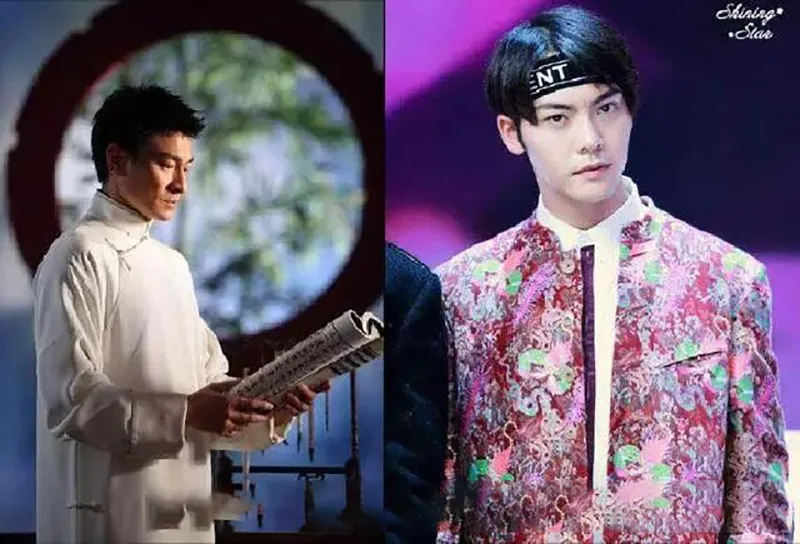
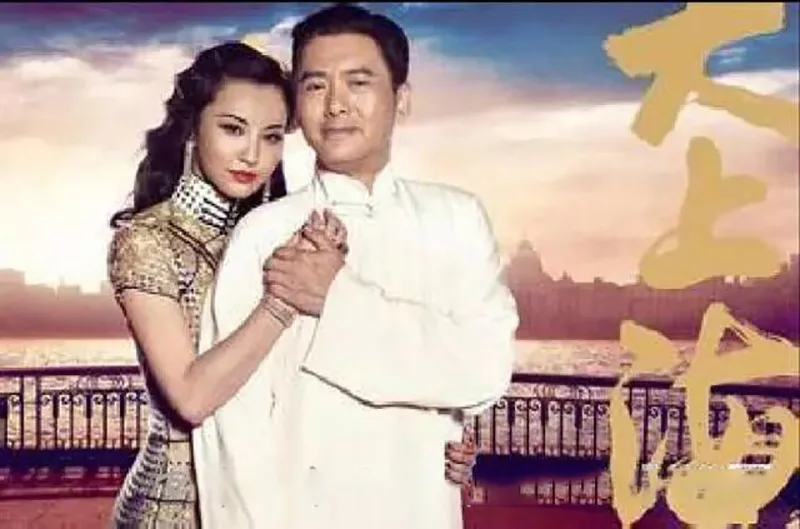
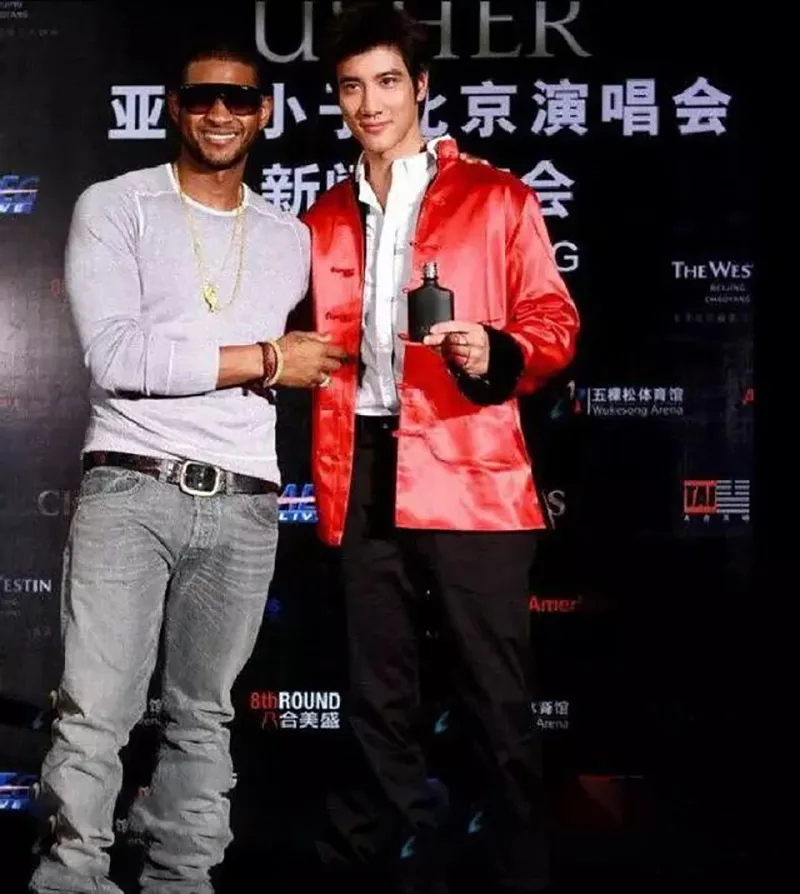
No matter how you look at it, China has a 5,000-year history of civilization. Although Chinese culture has evolved in form and thought over the centuries, it has always retained a core that is passed down through generations. Spacious, comfortable, and flowing designs are the fundamental elements of traditional Chinese clothing. The Tang suit stands as an important symbol of Chinese culture, and wherever it is worn, it remains a source of pride for Chinese people.
Experience the elegance and timeless charm of traditional Chinese fashion with our Tang suits. Carefully crafted to blend the classic features of the Manchu Magua with modern tailoring, these suits are perfect for festive occasions, daily wear, or adding a touch of cultural sophistication to your wardrobe.
Explore our full Tang Suit Collection and find the Tang suit that reflects your style and heritage.
